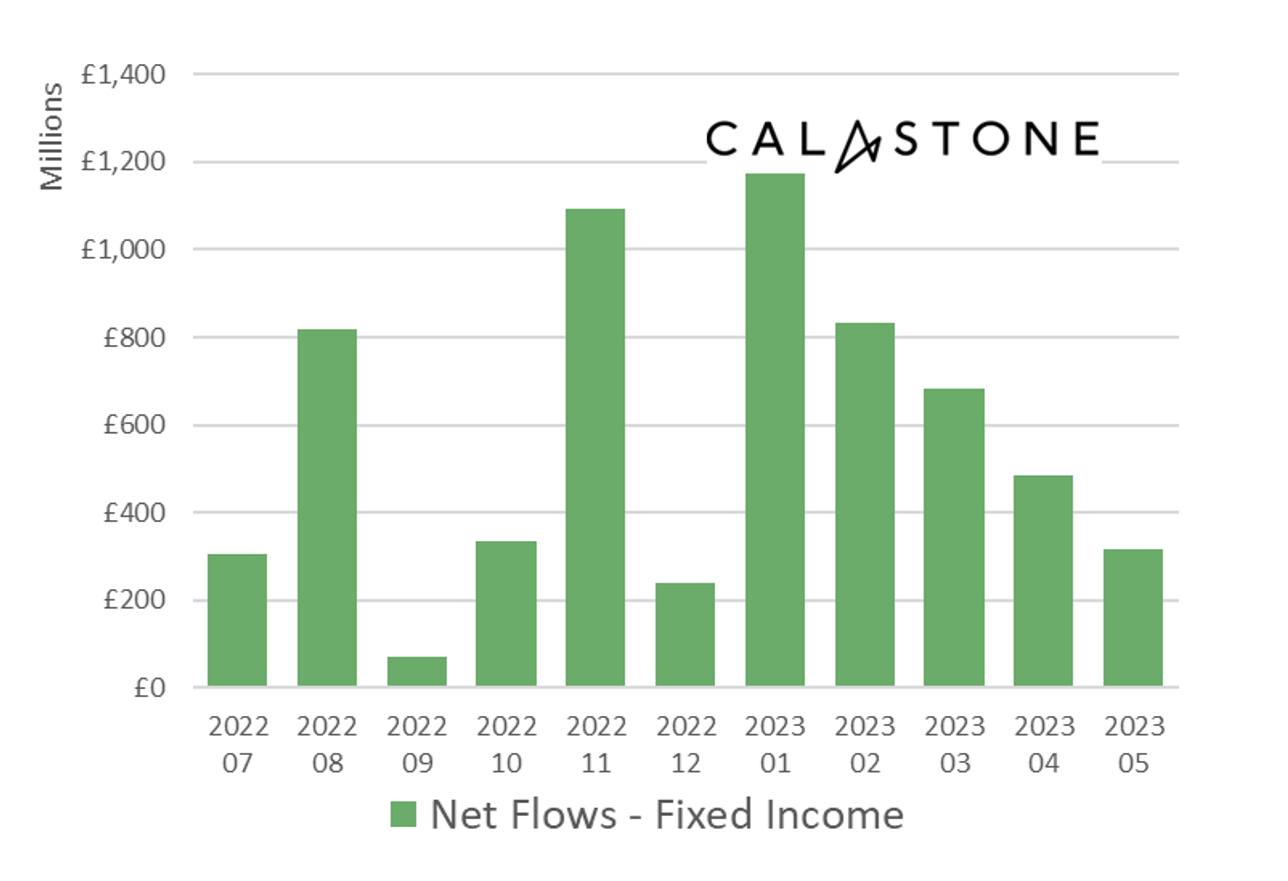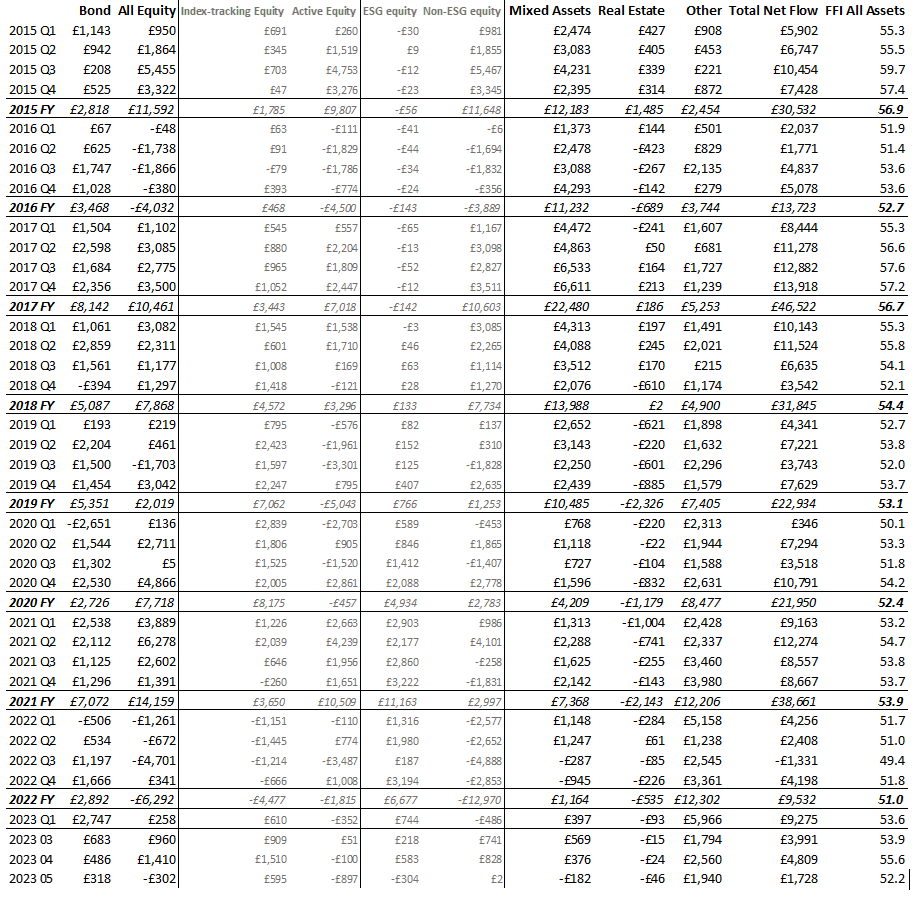Safe-haven money market funds see highest inflows since mini-budget and second highest since onset of Covid-19
UK investors took shelter in money market funds in May at the fastest rate since the mini-budget, as high volatility in bond markets signalled concerns over inflation, the likely path of interest rates in the UK and abroad, the US debt ceiling and the outlook for economic growth. The latest Fund Flow Index from Calastone, the largest global fund network, showed net inflows to money market funds surged to £419m during the month, their highest since October 2022 in the aftermath of the UK’s failed mini-budget. The only other moment inflows to money market funds have exceeded this level was at the beginning of the pandemic – in March 2020[1] as the first wave of Covid-19 hit and the country was locked down.
Edward Glyn, head of global markets at Calastone explained: “Money market funds invest in bonds with very short maturities, so they are typically among the least risky assets available. These bonds have yields very closely linked to central bank policy rates which are of course at their highest levels in over a decade at present and have therefore been looking attractive compared to still meagre bank savings rates. Wobbles in the US banking system have reminded investors of the risks of having bank deposits above insured thresholds too, leaving money markets as an obvious place for wealthier individuals to park surplus cash.”
Volatile bond markets curbed fixed-income inflows, but investors still added to holdings, attracted by high yields

Volatility in bond markets in May dampened enthusiasm for fixed income funds which invest in bonds with longer maturities and which are therefore riskier. Inflows continued in May, because rising yields made fixed income more attractive to new capital, but the net flows were much lower. Investors added a net £318m during the month, half the average of the last year and down by three quarters from January’s five-year high. Corporate bonds funds, which invest in debt issued by large companies, absorbed most of this new capital. Notably, transaction volumes fell much less than net inflows.
Edward Glyn added: “A relatively large amount of two-way trade in fixed income funds for a lower net inflow indicates more diverse opinion among investors on the asset class. This is consistent with volatile market conditions. Some are attracted by higher yields, others deterred by capital losses on funds already invested.”
Equity funds suffered outflows – volatile bond markets and bad news on inflation hit sentiment
Consistent with this pattern, equity funds saw a sharp reversal of fortune in May. After enjoying strong inflows in March and April[2], investors withdrew a net £302m in May, the worst figure for equity funds since the mini-budget. UK-focused equity funds were hardest hit, with outflows of £583m, but a brief flurry of inflows in the last two months to North American funds was reversed and selling of European equity funds intensified. Sentiment on Asia-Pacific also turned negative. Only global funds and emerging market funds saw inflows, totalling £849m and 212m respectively. May’s outflows were driven both by a sharp drop in buying activity as well as a small increase in selling
ESG equity funds suffered their worst ever month
ESG equity funds suffered their worst ever month, shedding £304m of capital. May was only the second month during which investors have been net sellers in this sector in over five years.
Among other asset classes, mixed asset funds and property funds also suffered outflows.
Edward Glyn, commented: “May’s bond market ructions had surprisingly little impact on share prices but fund investors, recognising that higher yields are bad for stock markets, clearly contracted buyer’s remorse after ploughing so much cash into equites in the previous two months. Most stock markets were flat across the month, with the exception of the UK, where the index fell as equity investors reeled at the impact of UK bond yields soaring above Italy’s for the first time since the mini-budget.”

[1] March 2020, net inflow £828m
[2] March 2023 net inflow £959m, April 2023 £1,410m











